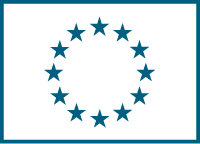Demonstration Project of Separate Collection and recycling of Waste from Mobile Phones
(TRAGAMOVIL)
Date du début: 1 janv. 2002,
Date de fin: 31 déc. 2004
PROJET
TERMINÉ
Background
While these days we may not be able to survive without our mobile phones anymore, these incredibly useful devices also have an environmental dark side â they produce a large and growing amount of waste. Moreover, the rapid evolution in mobile phone technology has resulted in a spectacular increase in the number of obsolete handsets (the phones themselves), of which Spain alone already has an estimated three million. A report on the subject carried out in June 2000 by the Spanish National Multi-sectoral Association of Electronic and Communication Enterprises (ASIMELEC), estimated that some 766,506 kg of mobile phone waste was generated in the country in 2000, a sum that grew to 2 million kg in 2001 and as much as 3 million kg in 2003. Worse still, mobile handsets contain potentially hazardous substances such as batteries, which require appropriate disposal management to prevent damage to the environment. At the same time, some handset parts also contain valuable raw materials that are in limited supply, such as precious metals, which could be profitably recovered.
Objectives
The main objective of the project was to find a solution to this problem of waste generated by mobile phones, their accessories and components. Project activities were to include an estimation of waste generation rates and the management cost of the waste, and identification of those socio-economic patterns that may influence the disposal of obsolete mobile phones. It also envisaged the development of a separate waste collection and integrated treatment system. Furthermore, the project was to promote âEco-Designâ among mobile phone manufacturers. Consequently, the project was to involve different stakeholders involved with the various stages of the life-cycle of a mobile phone and its accessories: manufacturers, end-users, distributors, public administrations and recycling companies. The ultimate aim was to make citizens aware of the need to collect and recycle waste mobile phones in order to conserve raw materials and to protect natural resources.
Results
Different scenarios for the pilot experiments for the collection and recycling of mobile phone waste were designed. These scenarios were put into action, which saw the collection and recycling of mobile phone waste at technical service centres, mobile phone retail outlets, commercial areas and recycling centres, among other locations.
Complementing the waste collection and recycling, a publicity campaign involving posters, leaflets and other information materials on the collection campaign was launched, targeting consumers and mobile shops.
The project began treatment of mobile telephony waste in a pilot plant, and in the process, managed to save raw materials such as metals and plastics and prevented more than 200 tonnes of mobile telephone waste going to the rubbish dump. This figure is the equivalent of approximately 300,000 phone handsets and 172 tonnes of other kinds of material.
The project has thus diverted this kind of waste from the traditional flow of residential refuse, saving costs in the extraction of raw materials.
In terms of public opinion, the project successfully developed greater awareness of the problem of mobile waste and a favourable view of the need to recycle handsets.
Furthermore, this initiative has opened up new lines of research into the recovery of the different materials from which a mobile phone is made, as well as into new markets for recycled or recovered raw material.
The entire project can be directly transferable to any other electrical and electronic equipment from the Annex I categories of the 2002/96/EC Directive that have common features such as their small size, their wide dissemination to the average citizen, their short lifespan (due to swift technological progress), and valuable material content for the recycler.
Hence this model could be applied to mobile and portable radio communications equipment, baby alarms, pagers, laptops, MP3 players, and portable video game consoles.
Based on the results obtained from the LIFE-Tragamóvil project, the economic impact that the implantation of the obligations derived from the 2002/96/EC Directive, could range from 1.6 to 2.5 euros/kg collected. This could have a knock-on effect for the manufacturers of between 0.13 and 0.20 euros/unit.




